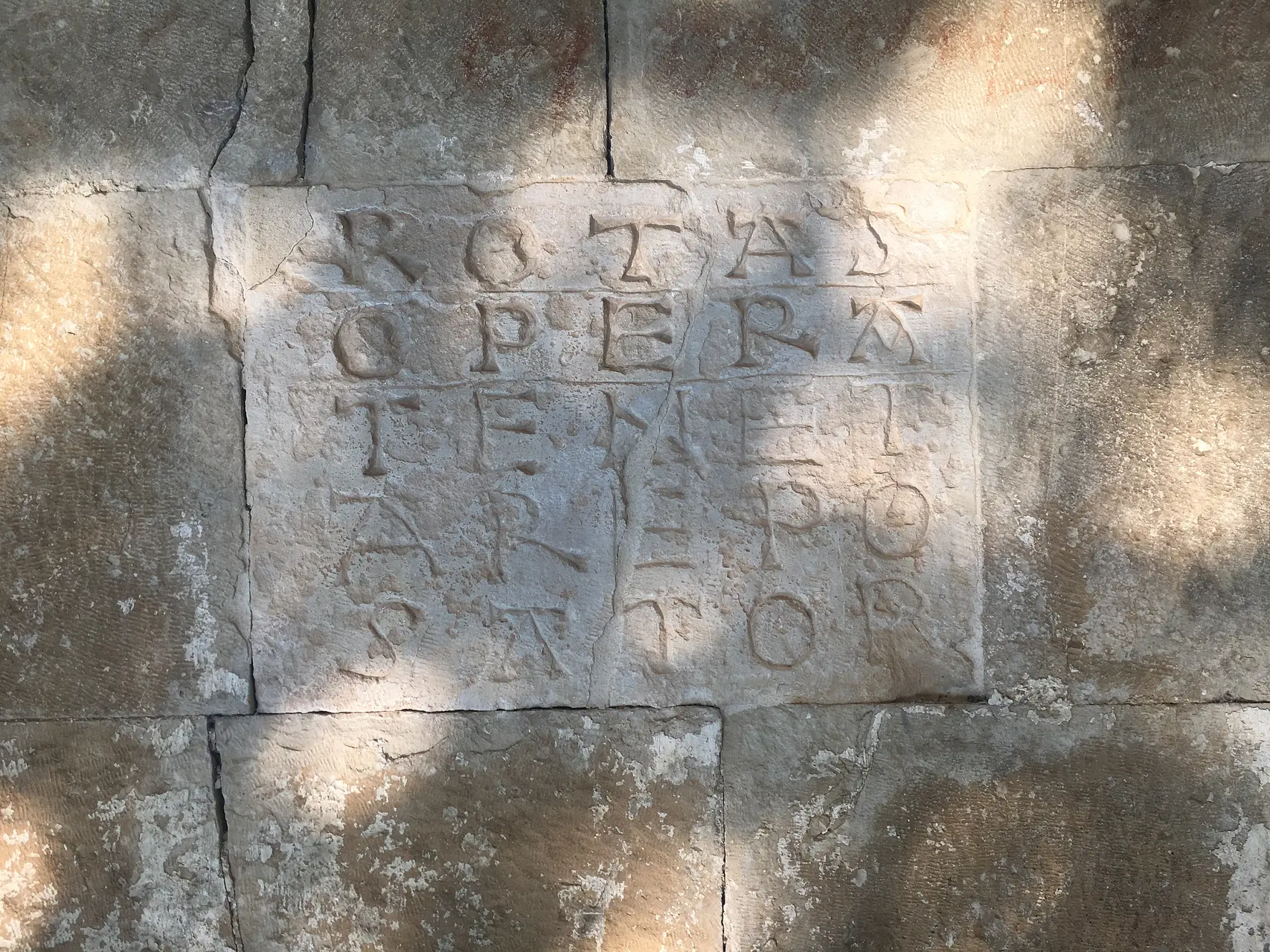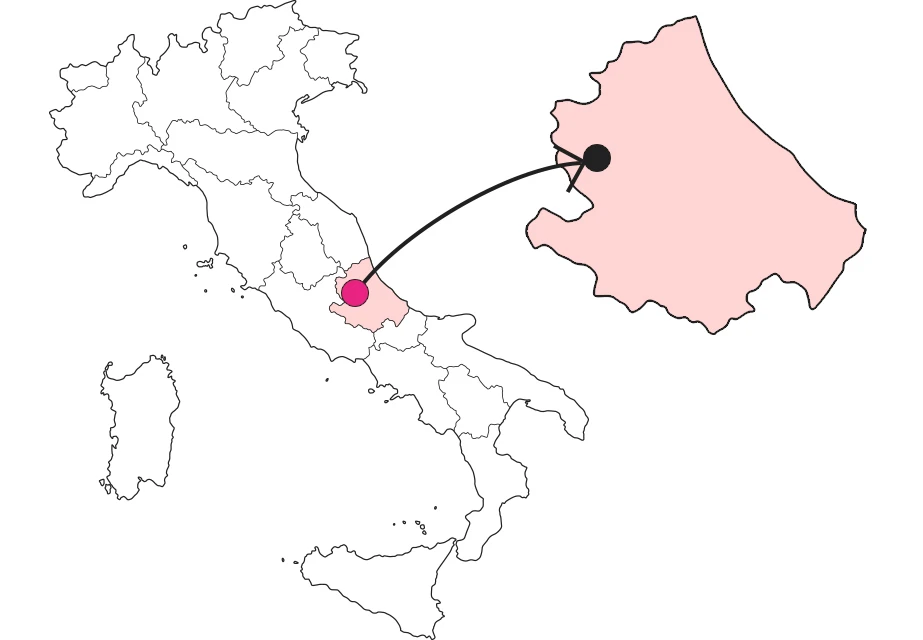

San Pietro ad Oratorium, the church of the magic square
A place suspended in time, fascinating and mysterious, in the valley of the Tirino River



Where is

Where is the church of San Pietro ad Oratorium
A few kilometers from Capestrano, nestled in the green Tirino Valley, lies a place suspended in time: the church of San Pietro ad Oratorium. This ancient treasure chest of art and spirituality reveals itself to visitors with an aura of mystery and charm, concealed behind the austere simplicity of its bare stone.
A bit of history, carved in stone
To get there, a path leads to the back of the building, an understated facade that seems to jealously guard its secrets. But it is when you reach the front of the church, with its elegant portal and Latin inscription carved in stone, that history begins to unravel: "Founded by King Desiderius, renovated in the year 1100." King Desiderius, the last ruler of the Lombards, known for his tragic role in Charlemagne's epic, is said to have erected the church in the 8th century, perhaps guided by a heavenly vision.
The story goes, in fact, that the apostle Peter appeared to him in a dream, asking him to build a sacred place on the banks of the Tirino River, then called Trita because of its three springs. And so St. Peter was born, whose very name seems to be linked to the soul of the area, to that "Caput trium amnium" that we know today as Capestrano.
Why it is special: the magic sator square
But the church is not just a historical monument: it is an enigma carved in stone. On its facade, a block bears five words engraved, forming a perfect palindrome: ROTAS, OPERA, TENET, AREPO, SATOR. The inscription, known as the "magic square," has been found in several places in Europe and continues to fascinate with its enigmatic meaning.
Fun fact: What does the magic square represent?
This "magic square" has challenged scholars for centuries with its hidden meaning. Some have read a Christian symbol into it, glimpsing in the arrangement of the letters the possibility of deriving the invocation "Pater Noster" twice. But there are darker theories: anagrams evoking prayers to dark forces. Yet perhaps the real key to the mystery lies in the simplicity of the images the words evoke: the wheels (rotas), universal symbols of the cycle of life and time; the work (opera), which gives meaning to our existence; and the sower (sator), who could be as much the farmer as the Creator himself, the one who holds (tenet) everything in his hands. It is a play of symbols and meanings that invites reflection and ignites the imagination.
Not to be missed: the interior of the church
Inside the church, the beauty continues. Beyond the ciborium, the apse opens in an explosion of color and reveals a cycle of frescoes that represent one of the earliest examples of medieval Abruzzo painting. Each brushstroke tells the story of monks and laymen, of wars and peace, of faith and humanity.
San Pietro ad Oratorium is not just a church: it is a dialogue between past and present, the visible and the invisible. As Paul Klee wrote, "Art does not repeat visible things, but makes visible what is often not visible." And that is precisely the gift of St. Peter's, a place that invites us to see beyond, to peer into the mystery and to be inspired.

